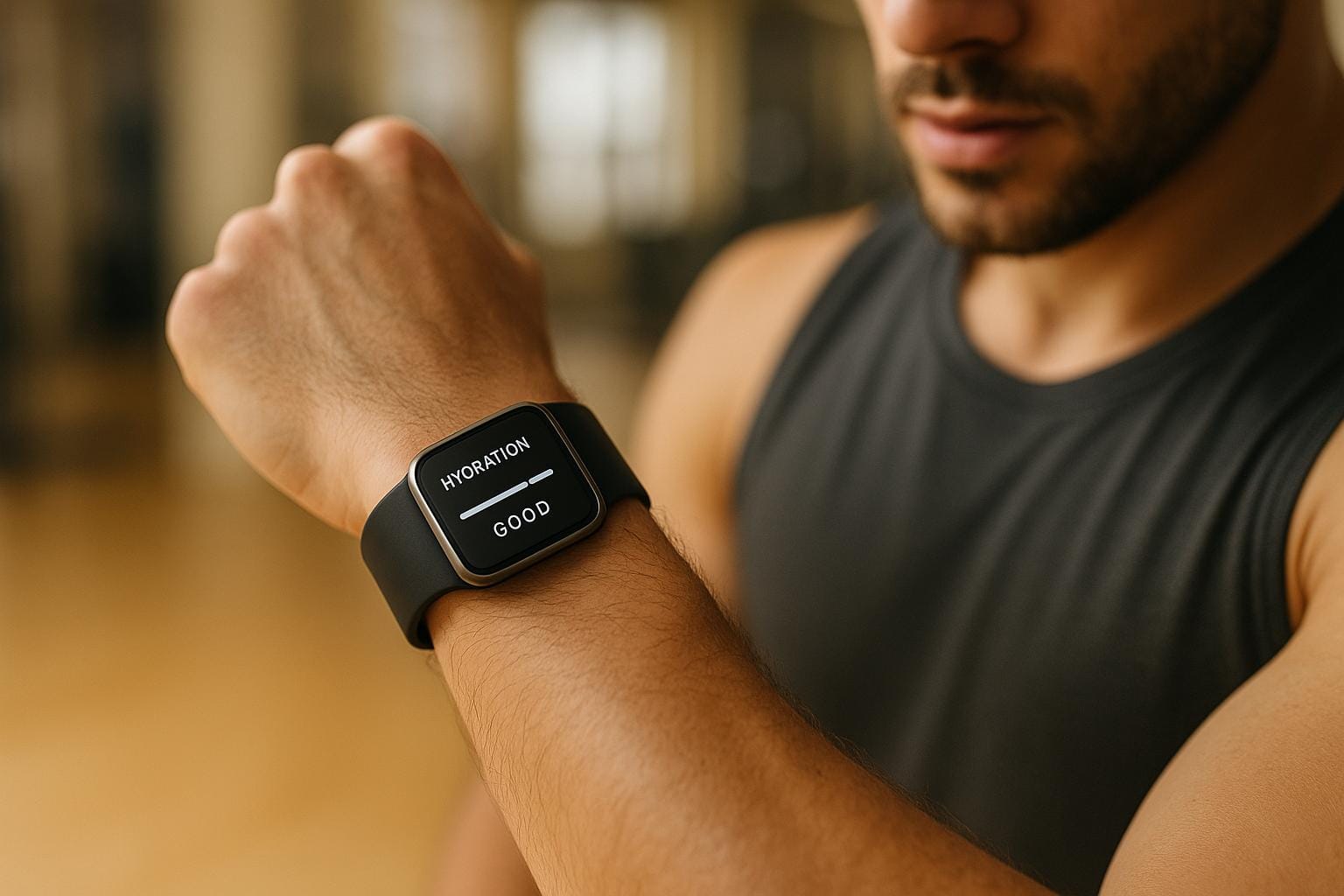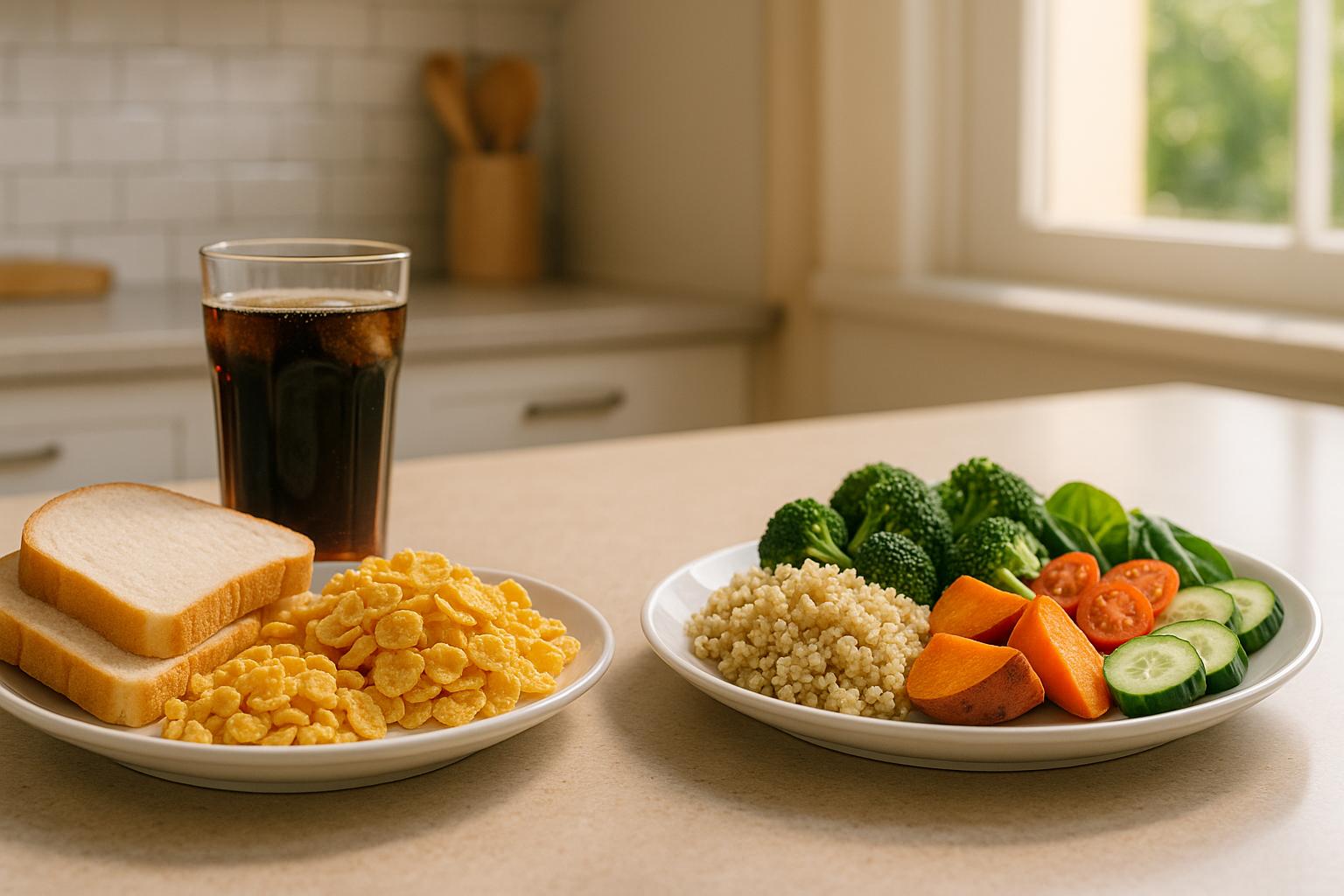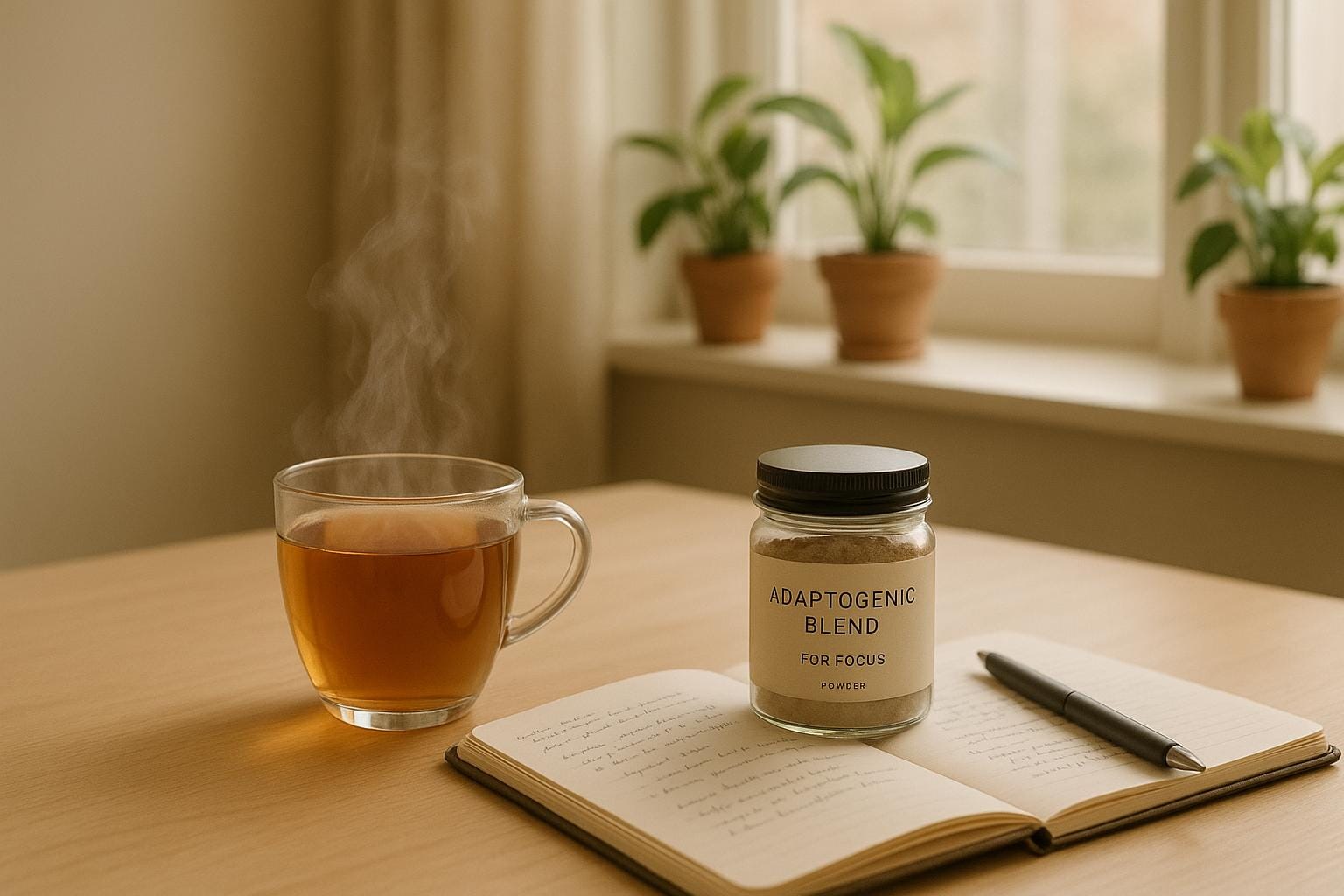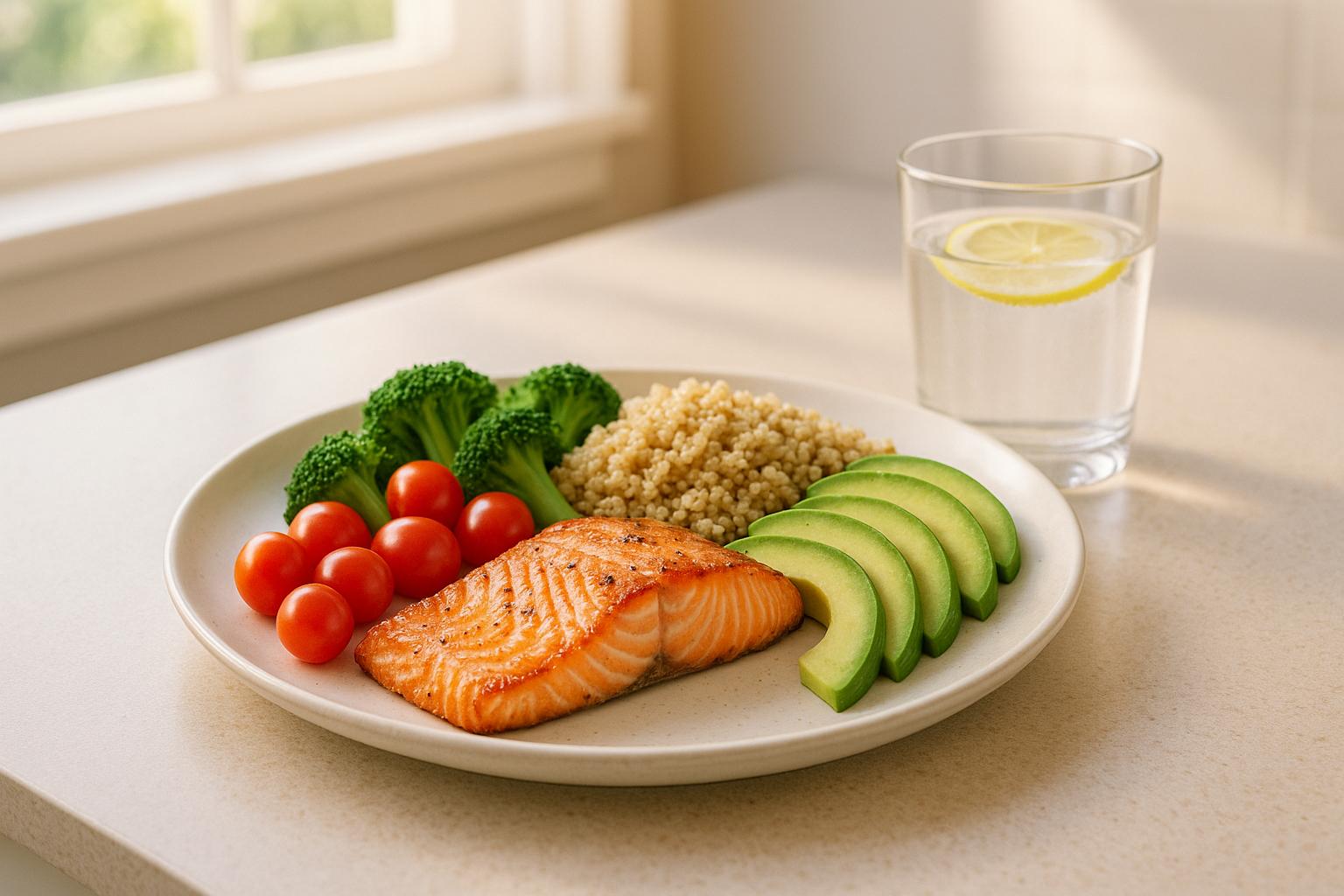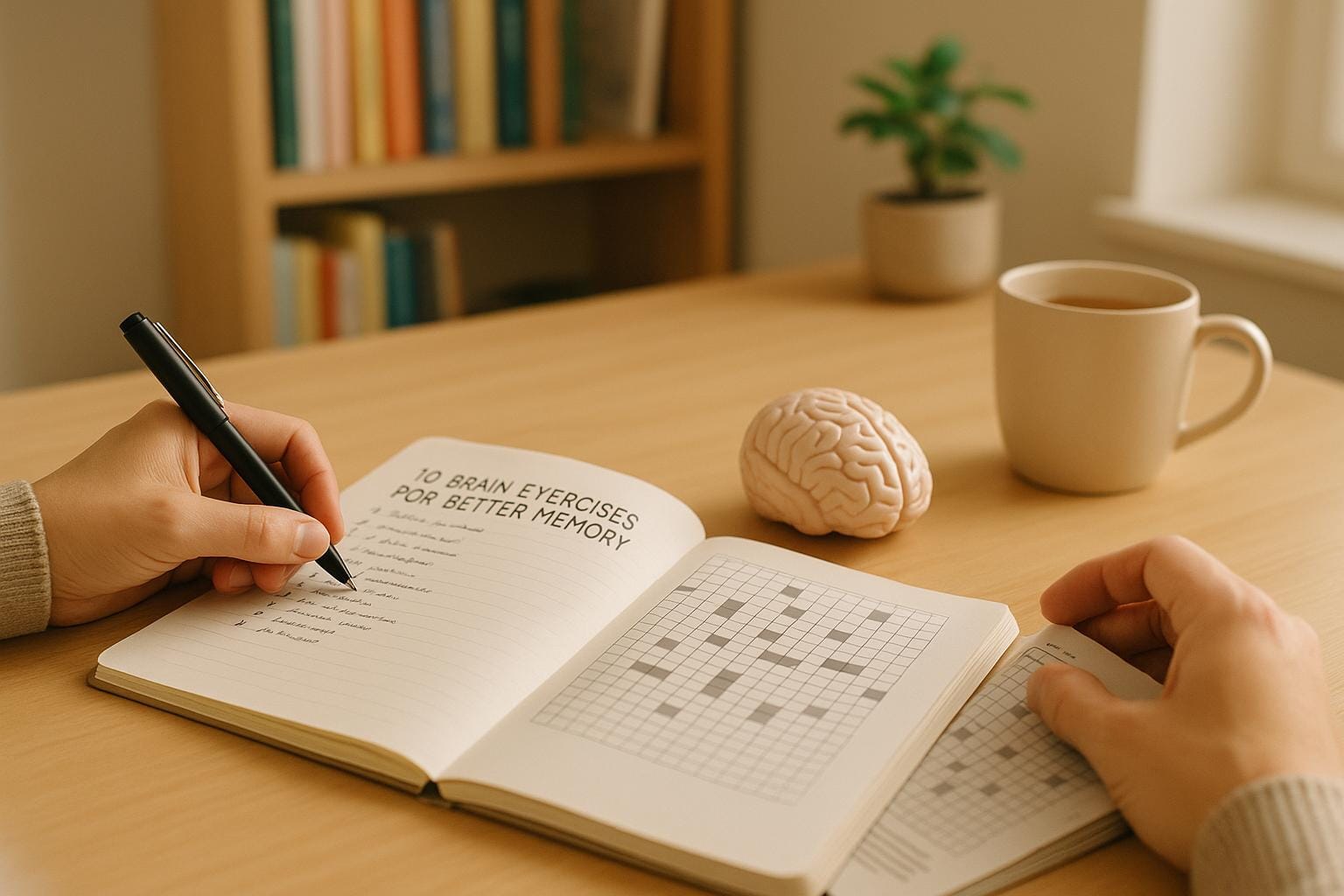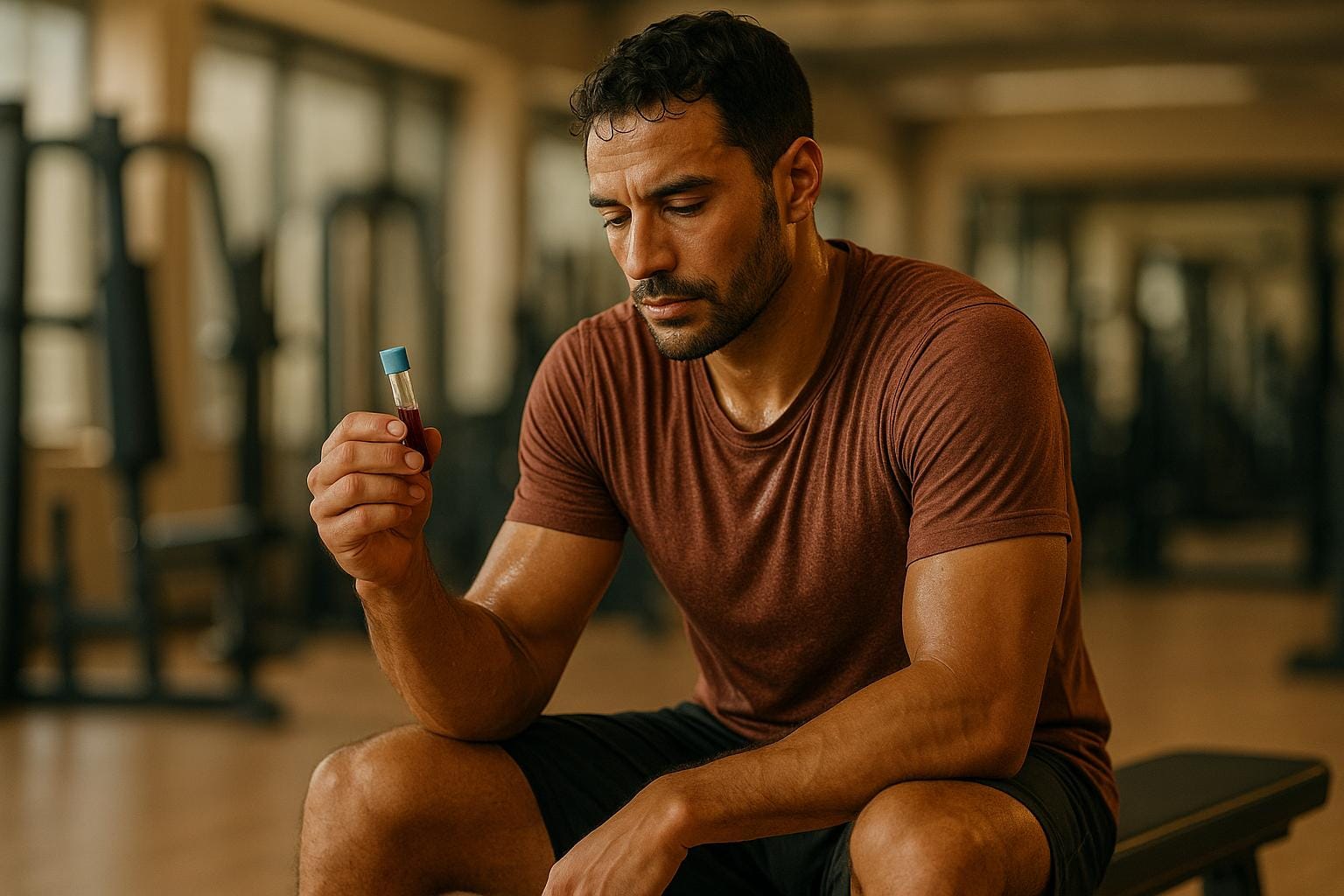Electrolyte monitoring wearables are transforming hydration tracking. These devices analyze sweat in real time, offering insights into sodium, potassium, chloride, and other key electrolytes. Whether you're an athlete or just hydration-conscious, these tools help optimize performance, prevent dehydration, and reduce risks like heat-related illnesses. Here's a quick look at the top options:
- Rockley Bioptx: Tracks sodium, potassium, and hydration levels using advanced SWIR tech. Ideal for athletes needing precise, real-time data.
- LVL Wristband: Focuses on hydration levels with near-infrared sensors. Great for fitness users seeking broader health insights.
- Microfluidic Sweat Patch: Measures sodium, potassium, and chloride directly from sweat. Perfect for athletes or researchers needing detailed data.
- Sixty Hydration Monitor: Offers hydration analysis with simple skin taps. Suited for endurance athletes or beginners.
- Wearable Chloride Ion Sensor: Integrated into clothing, it continuously tracks chloride and other electrolytes. Convenient for workouts and clinical use.
These devices range from $130 to $600, catering to different needs and budgets. Below is a quick comparison to help you choose the right one.
Epicore Biosystem | Wearable Sensors for Sweat & Hydration Monitoring
Quick Comparison
| Device | Electrolytes Measured | Form Factor | Connectivity | Best For | Price Range (USD) |
|---|---|---|---|---|---|
| Rockley Bioptx | Sodium, potassium, chloride | Wristband/watch | Bluetooth (BLE) | Athletes, fitness enthusiasts | $400 - $600 |
| LVL Wristband | Sodium, potassium, hydration | Wristband | Bluetooth (BLE) | General fitness users | $200 - $300 |
| Microfluidic Sweat Patch | Sodium, potassium, chloride | Adhesive patch | NFC | Athletes, researchers | $200 - $400 |
| Sixty Hydration Monitor | Sodium, chloride, hydration | Headband/patch | Bluetooth (BLE) | Endurance athletes | $250 - $400 |
| Wearable Chloride Ion Sensor | Chloride, sodium, potassium | Textile-integrated | Wireless | Athletes, clinical monitoring | $200 - $400 |
These sensors provide actionable hydration insights, helping you stay healthy and perform at your best. Always consult a healthcare professional before making changes to your routine.
1. Rockley Bioptx
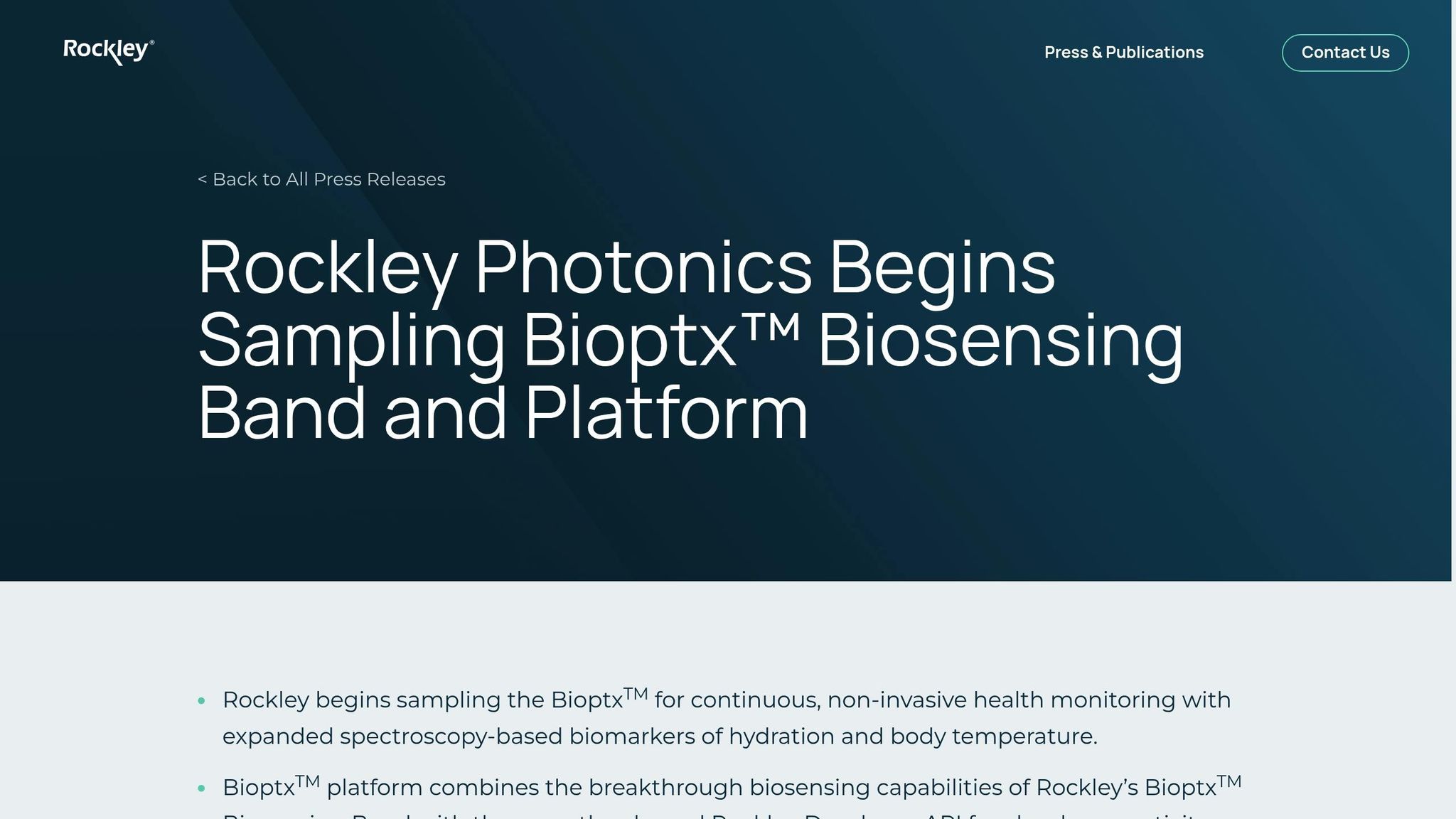
The Rockley Bioptx is a cutting-edge wearable that uses SWIR (short-wave infrared) technology to monitor hydration and electrolyte levels with clinical-level accuracy - all packed into a smartwatch-like device.
Electrolytes Tracked
This device focuses on two key electrolytes essential for athletic performance and recovery: sodium and potassium, both measured through sweat analysis. It also tracks water concentration changes across skin layers to provide insights into hydration levels. Rockley is working on a specialized hydration index that offers users a clear understanding of their fluid balance.
Real-Time Monitoring Features
The Bioptx streams data in real time, keeping tabs on hydration, body temperature (via SWIR), and vital signs such as heart rate, heart rate variability, respiratory rate, and blood oxygen saturation (using LED photoplethysmography). It syncs effortlessly with your smartphone or uploads data to the cloud through the Rockley Developer API. This seamless integration ensures instant feedback, making it ideal for tracking performance during workouts.
"Rockley has created the full technology stack from the design of the PIC, to the full wearable integration and novel biomarker delivery. We have significantly progressed the SWIR-tissue measurement science and biomarker algorithms through IRB-approved human studies." – Andrew Rickman, CEO and chairman of Rockley
Design and Usability
The Bioptx is designed for comfort and functionality, featuring a compact smartwatch-like form (1.79 x 1.63 x 0.59 inches, weighing 1.76 oz, and 15mm thick). It’s IP67-rated for water resistance and offers up to three days of battery life on a single charge.
Who Is It For?
This wearable is tailored for athletes and fitness enthusiasts. Early studies highlight its accuracy, predicting dehydration 99% of the time and normal hydration 82% of the time.
"The results of our hydration study are promising and show how our wearable sensing platform can measure hydration levels." – Dr. Andrew Rickman, chairman and CEO of Rockley
2. LVL Wristband
The LVL Wristband uses near-infrared red light to monitor your body's hydration levels. Impressively, it garnered $1,186,983 in funding from 7,501 backers on Kickstarter.
Real-Time Monitoring Capability
This wristband delivers hydration alerts and performance insights through a sleek OLED touch screen. It connects seamlessly with Apple, Android devices, and compatible bike computers. Operating in the 650–1,100 nm range, its red light penetrates up to ten times deeper than green light. This deeper reach ensures more precise readings of your body's water levels.
Additionally, the device sends timely notifications to your phone, keeping you informed of important body trends.
Form Factor and Comfort
With a battery life of four days and IP67 waterproofing, the LVL Wristband is both durable and convenient. Beyond hydration, it offers a wide range of health metrics, including heart rate monitoring with an impressive accuracy of within 3 beats per minute. Lab tests revealed its measurements deviated by just 0.32% compared to professional laboratory readings.
Target Audience
This device is tailored for athletes and fitness enthusiasts who want more than just hydration tracking. It also monitors activity, sleep, mood, and heart rate, making it a comprehensive health tool. While its retail price was set at $200, early Kickstarter backers snagged it for $129.
What sets the LVL Wristband apart is its focus on hydration optimization rather than tracking specific electrolytes. It’s a solid choice for those seeking actionable hydration insights seamlessly integrated into their fitness routine.
Next, we’ll dive into a sensor designed specifically for precise electrolyte measurements.
3. Microfluidic Sweat Patch
The Microfluidic Sweat Patch takes sensor technology to the next level, offering precise electrolyte monitoring directly through sweat analysis. Unlike devices that only estimate hydration levels, this patch provides accurate, measurable data on electrolyte concentrations.
Electrolytes Measured
This device focuses on tracking sodium (Na⁺) and chloride (Cl⁻) levels by analyzing sweat conductivity. Research by Steijlen et al. found a strong linear correlation (R² = 0.97) between continuous sweat conductivity readings and lab-measured sodium and chloride levels. Advanced models even measure potassium concentrations using ion chromatography. For instance, the Art-Sweat patch can monitor sweat rates between 0.2–4.0 μL/min and ionic charge concentrations ranging from 10–200 mmol/L. Similarly, Hashimoto et al. developed a patch capable of measuring sweat flow rate and sodium chloride concentration with an accuracy margin of ±10%. These features ensure precise and actionable insights.
Real-Time Monitoring Capability
Equipped with a conductivity sensor housed in an analysis chamber, the patch continuously monitors electrolyte levels during physical activity. This real-time data syncs wirelessly with mobile apps, allowing users to track trends and fine-tune their hydration strategies as needed.
Form Factor and Comfort
The patch is designed for long-term wear, using breathable, hypoallergenic materials and a medical-grade acrylic adhesive (~5.7 N adhesion) that provides superior hold compared to alternatives like Tegaderm (1.02 N). Its ultra-thin design (25 μm) and low modulus (~17 kPa) minimize stress on the skin during movement, enhancing comfort.
Target Audience
This patch is ideal for serious athletes, endurance sports enthusiasts, and researchers who demand detailed electrolyte data rather than general hydration estimates. Its high level of accuracy makes it a valuable tool for optimizing athletic performance and supporting clinical or research efforts. Due to its advanced features and cost, it’s best suited for professionals or dedicated amateurs seeking precise performance insights.
This article is for informational purposes only and is not intended as medical advice. Please consult a healthcare professional before starting any new fitness or wellness routine.
4. Sixty Hydration Monitor

Using advanced electrolyte sensors, the Sixty Hydration Monitor makes keeping track of your hydration levels straightforward and accessible. This device relies on cutting-edge photonics technology to evaluate your body's fluid levels. With just a quick tap on your skin, it provides a full hydration analysis, including your hydration status and heart rate.
How It Measures Hydration
Rather than focusing on specific electrolyte concentrations, this monitor assesses overall hydration levels. Staying properly hydrated is essential, as even mild dehydration can disrupt cognitive functions like memory, attention, and decision-making.
Real-Time Feedback
The device is designed to offer periodic reminders to check your hydration. A simple tap on your skin activates the analysis, delivering immediate feedback on your hydration status and offering suggestions to maintain optimal fluid levels.
Design and Usability
The Sixty Hydration Monitor is designed with flexibility in mind. It comes with a detachable armband, making it convenient for workouts, while still being compact enough to store easily when not in use. This thoughtful design ensures it’s practical for everyday use.
Who Is It For?
This monitor is especially appealing to fitness enthusiasts who want an easy way to stay on top of their hydration. Its straightforward design and periodic reminders also make it a great choice for those new to hydration tracking.
This article is for informational purposes only and does not serve as medical advice. Always consult a healthcare professional before starting any new fitness or wellness routine.
5. Wearable Chloride Ion Sensor
Building on the advancements in wearable electrolyte monitoring, the Wearable Chloride Ion Sensor offers a seamless solution for tracking sweat composition. Developed by researchers at Tokyo University of Science, this device uses heat-transfer printing to create a flexible sensor that integrates directly into clothing and accessories, providing constant monitoring without the hassle of standalone gadgets.
Electrolytes Measured
This sensor is designed to monitor chloride ion concentrations in sweat, with the ability to measure sodium, potassium, and ammonium ions as well. Chloride plays a key role since it is the most abundant electrolyte in human sweat, typically ranging from 10–100 mM.
"Since chloride is the most abundant electrolyte in human sweat, measuring its concentration provides an excellent indicator of the body's electrolyte balance and a useful tool for the diagnosis and prevention of heat stroke", explains Dr. Isao Shitanda.
The device works by detecting changes in electromotive force (EMF) to measure chloride levels. During testing, it demonstrated a Nernst response of −59.5 ± 3.4 mV/log in the 0.1–100 mM concentration range, with a detection limit as low as 1 × 10^-4.3 M.
Real-Time Monitoring Capability
This sensor offers continuous and non-invasive tracking, eliminating the need for manual activation. It wirelessly transmits real-time data, making it ideal for monitoring during workouts or daily routines. In a study, the sensor reliably tracked chloride levels during 30 minutes of cycling and demonstrated a strong correlation with saliva osmolality, a marker of dehydration. This real-time feedback makes it a valuable tool for preventing heat-related illnesses, especially during intense physical activity.
Form Factor and Comfort
What sets this sensor apart is its integration into textiles. Instead of being a separate wearable device, it is embedded directly onto nonwoven fabric, allowing it to be easily attached to clothing like T-shirts or wristbands. The sensor is positioned on the side of the fabric that faces away from the skin, ensuring comfort while maintaining accuracy. The nonwoven material not only protects the sensor but also facilitates sweat flow for precise readings. Additionally, the materials used are skin-friendly, with a chloride-selective membrane that prevents metal ion leakage and reduces the risk of allergic reactions.
Target Audience
This sensor is particularly beneficial for athletes who need real-time data to optimize recovery and reduce the risk of soft tissue injuries. It also caters to fitness enthusiasts by providing personalized hydration insights tailored to their activity levels. In clinical settings, the continuous tracking of chloride levels can help diagnose and prevent conditions like heat stroke and hyponatremia.
This article is for informational purposes only and is not intended as medical advice. Always consult a healthcare professional before starting any new fitness or wellness routine.
Device Comparison Table
Find the right electrolyte monitor by aligning features, connectivity, and price with your specific needs. The table below offers a quick side-by-side look at key features, followed by insights to help you make an informed decision.
| Device | Electrolytes Measured | Form Factor | Connectivity | Target Users | Price Range (USD) |
|---|---|---|---|---|---|
| Rockley Bioptx | Sodium, potassium, chloride, lactate | Wristband/watch | Bluetooth Low Energy (BLE) | Athletes, fitness enthusiasts | $400 - $600 |
| LVL Wristband | Sodium, potassium, hydration levels | Wristband | Bluetooth Low Energy (BLE) | General fitness users, hydration-conscious individuals | $200 - $300 |
| Microfluidic Sweat Patch | Sodium, potassium, chloride, glucose | Adhesive skin patch | Near Field Communication (NFC) | Athletes, medical monitoring patients | $200 - $400 per patch |
| Sixty Hydration Monitor | Sodium, chloride, hydration status | Headband/forehead patch | Bluetooth Low Energy (BLE) | Endurance athletes, outdoor workers | $250 - $400 |
| Wearable Chloride Ion Sensor | Chloride, sodium, potassium, ammonium | Textile-integrated sensor | Wireless transmission | Athletes, clinical monitoring, heat stroke prevention | $200 - $400 |
Key Considerations
Connectivity Options
Bluetooth Low Energy (BLE) stands out for its extended wireless range of up to 328 feet (100 meters), making it ideal for continuous monitoring during workouts. While BLE offers convenience, it does consume more energy compared to other options. On the other hand, Near Field Communication (NFC) eliminates the need for a battery by relying on the power of the receiving device. However, NFC requires close proximity - perfect for quick data transfers but less suited for continuous tracking.
Form Factor and Comfort
The device's design plays a big role in user comfort and compliance. Adhesive patches provide direct skin contact for accurate readings but need regular replacement. Wristbands, with their smartwatch-like design, offer a familiar and convenient experience. For those seeking seamless integration, textile sensors embedded in clothing provide a comfortable option for continuous monitoring.
Pricing and Features
Pricing varies based on features and target users. Disposable adhesive patches, priced between $200 and $400, cater to occasional monitoring needs. Mid-range devices, such as the LVL Wristband or textile-integrated sensors, balance affordability and functionality for regular use. Premium devices like the Rockley Bioptx, priced at $400–$600, deliver advanced features suitable for athletes and fitness enthusiasts seeking comprehensive monitoring.
Choosing the Right Device
For athletes requiring real-time feedback during extended training, BLE-enabled devices are a great choice due to their range and continuous monitoring capabilities. If battery-free operation is a priority, NFC-based sensors offer a practical alternative, particularly for users who prefer occasional or short-term monitoring.
This article is for informational purposes only and is not intended as medical advice. Please consult a healthcare professional before starting any new fitness or wellness routine.
Conclusion
Wearable electrolyte sensors are changing the game for fitness enthusiasts and athletes, offering real-time insights into hydration and electrolyte balance. With nearly half of the global population not consuming enough fluids, these devices address a critical health need. Even minor increases in plasma sodium levels can indicate dehydration, which significantly raises health risks.
The five sensors discussed earlier provide users with the tools to monitor sweat loss and electrolyte levels during workouts and daily routines. This data helps optimize performance, speed up recovery, and reduce the risk of heat-related illnesses. By delivering real-time updates, these devices allow users to adjust their hydration strategies on the spot, ensuring better fluid balance and overall well-being.
"Proper hydration positively impacts several bodily functions, including sleep quality, cognitive performance (memory and mood), and the efficacy of medications."
– Neda Akhavan, Ph.D., R.D., Assistant Professor at the University of Las Vegas, Nevada
Beyond hydration, these sensors also play a role in improving long-term cellular health and aiding detoxification. As Dana Cohen, M.D., explains:
"Detoxification is the body removing waste or toxins that can accumulate from things like food, pollutants, etc. It's imperative to detoxify to live a long healthy life and we need good hydration in order to do so."
With prices ranging from $130 for basic models to $550 for premium features, there’s an option for everyone looking to enhance their performance and wellness. These devices are more than just fitness tools - they’re an investment in health, helping to prevent dehydration, improve recovery, and support a better quality of life.
This article is for informational purposes only and is not intended as medical advice. Please consult a healthcare professional before starting any new fitness or wellness routine.
FAQs
How do wearable sensors track electrolyte levels in sweat?
Wearable sensors now make it possible to track electrolyte levels in sweat using electrochemical detection technology. These devices work by channeling sweat through tiny microfluidic pathways, where chemical sensors measure key ions such as sodium, potassium, and chloride. The sensors pick up changes in electrical signals - like voltage or current - that are directly tied to the concentration of these ions.
What’s great about this technology is its ability to provide real-time, noninvasive monitoring. Designed to stick directly to the skin, these sensors can continuously analyze sweat, making them particularly helpful during workouts or recovery. They deliver valuable insights into your electrolyte balance and hydration levels, helping you stay on top of your physical performance and well-being.
What should I look for in a wearable electrolyte monitor?
When choosing a wearable electrolyte monitor, focus on its accuracy and its capability to track electrolyte levels in real time, particularly during exercise or physical activity. Devices that integrate with sweat analysis technologies and deliver dependable data can be incredibly useful for managing fitness and recovery.
You’ll also want to think about comfort, skin sensitivity, and how practical the device is to wear during workouts or throughout the day. A lightweight, low-profile design can make it much easier to use consistently. Ultimately, the monitor should align with your lifestyle and activity needs to ensure you get the best results.
Can wearable sensors help prevent dehydration and heat-related illnesses during exercise?
Yes, wearable sensors are a game-changer when it comes to preventing dehydration and heat-related issues during exercise. These devices keep tabs on crucial factors like hydration levels, electrolyte loss, and body temperature in real time, offering actionable insights about what your body needs. For example, sweat-sensing patches and biosensors can monitor how much fluid and electrolytes you're losing, helping you decide when and how much to rehydrate.
By alerting you early to signs of dehydration or heat stress, these sensors allow you to take quick action to protect yourself and keep performing at your best. They're particularly useful for athletes or anyone working out in hot or humid environments, where staying hydrated is critical.


